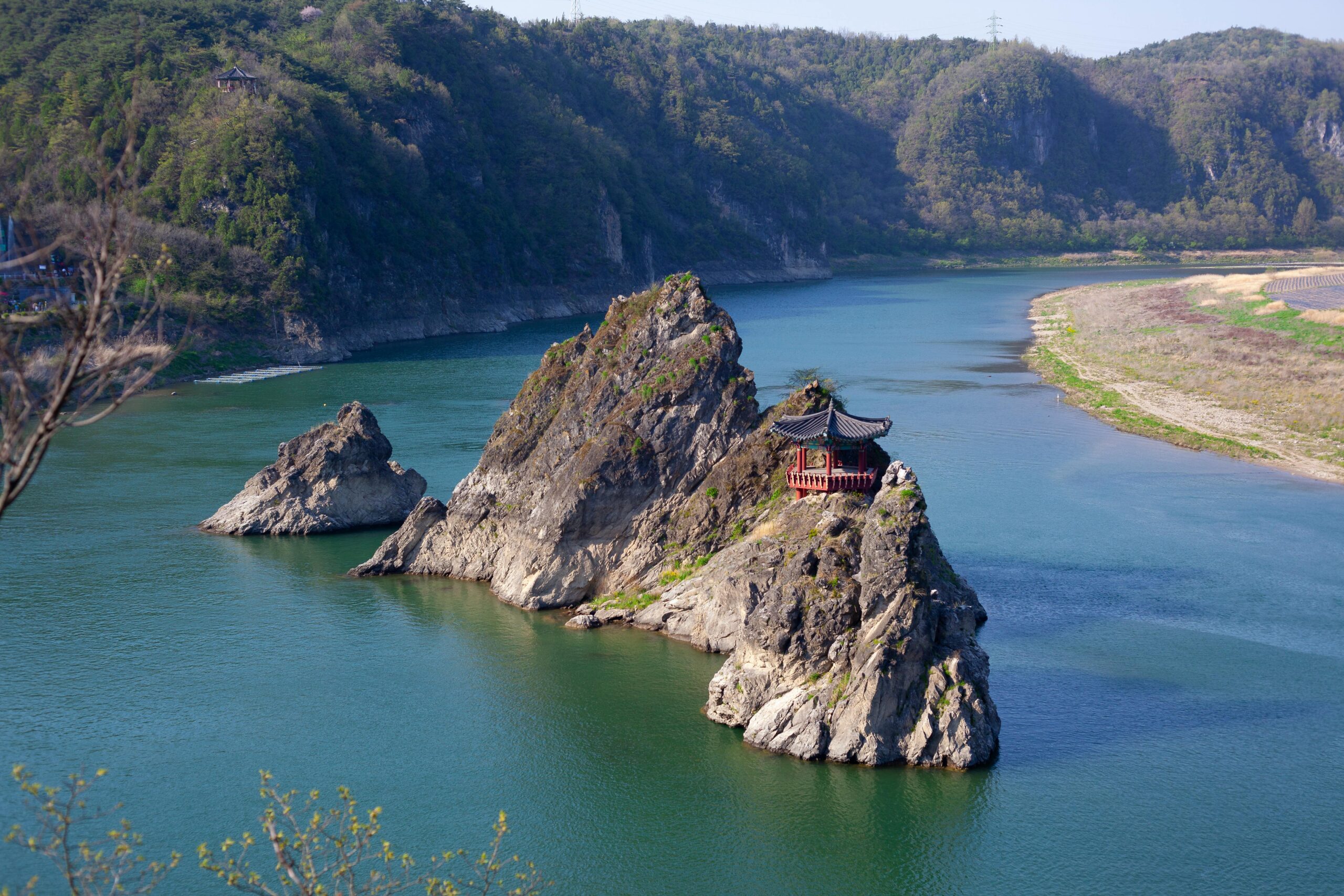Exploring Danyang and Guinsa Temple: Where Nature Meets Spirituality
Nestled in the heart of South Korea’s Chungcheongbuk-do province, Danyang is a region celebrated for its dramatic landscapes—limestone cliffs, emerald rivers, and lush valleys that seem to defy gravity. Yet beyond its natural wonders lies a hidden gem of spiritual significance: Guinsa Temple, the sprawling headquarters of the Cheontae Buddhist order. Unlike Korea’s older temples, Guinsa’s modern origins and unique architectural grandeur tell a story of resilience and rebirth. This article delves into Danyang’s geological marvels, Guinsa’s fascinating history, its symbiotic relationship with the surrounding environment, and the immersive cultural experiences it offers. Together, they form a journey where earthly beauty and spiritual introspection converge.
The Geological Drama of Danyang
Danyang’s landscape is a masterpiece sculpted by time. The region’s iconic Eight Scenic Views include the towering Gudambong Peak and the winding Namhan River, which carves through limestone formations to create caves like Gosu Donggul. These karst structures, formed over millions of years, are not just visual spectacles but also ecological hubs. The area’s biodiversity thrives in its microclimates, with rare plant species clinging to rocky outcrops. Danyang’s terrain has also shaped local culture, inspiring myths and traditional practices tied to the land’s mystique. For visitors, hiking trails like those along Chungju Lake offer panoramic vistas, setting the stage for the spiritual exploration that awaits at Guinsa.
Guinsa Temple: A Phoenix Rising from Ashes
Founded in 1945 by Sangwol Wongak, Guinsa Temple emerged during a tumultuous period in Korean history. Destroyed in the Korean War, it was rebuilt in the 1960s as a symbol of perseverance. Unlike ancient temples, Guinsa’s design reflects a bold vision: its buildings cascade down Mount Sobaeksan’s slopes, blending traditional Korean Buddhist architecture with modernist scale. The temple complex houses over 50 structures, including the awe-inspiring Five-Story Main Hall, which enshrines a golden statue of Vairocana Buddha. Guinsa’s role as the Cheontae Order’s headquarters underscores its importance in revitalizing a school of Buddhism that emphasizes the Lotus Sutra’s teachings, attracting monks and devotees worldwide.
Architecture in Dialogue with Nature
Guinsa’s layout is a testament to harmony between human creation and the natural world. Buildings follow the mountain’s contours, with staircases and pavilions framed by forests and cliffs. The use of natural materials—wood, stone, and clay—ensures the structures age gracefully, weathering storms and seasons alongside the landscape. Notably, the temple’s water system channels mountain springs into reflective pools, symbolizing purity and continuity. This integration extends to ritual practices: morning ceremonies are held in open-air courtyards where chants mingle with birdsong. For visitors, the journey to the temple’s highest pavilion becomes a meditative ascent, each step deepening their connection to both faith and environment.
A Living Sanctuary for Modern Pilgrims
Guinsa is not a relic of the past but a vibrant community. Temple stays allow visitors to partake in monastic life—dawn meditation, communal meals, and sutra copying—while workshops on Buddhist art and philosophy foster cross-cultural dialogue. The temple also hosts grand festivals, such as the Buddha’s Birthday lantern parade, which illuminates the valley in a kaleidoscope of colors. Meanwhile, Danyang’s adventure tourism—paragliding, kayaking—contrasts with Guinsa’s tranquility, offering a holistic travel experience. Together, they invite reflection on balance: between thrill and stillness, tradition and modernity, humanity and nature.
Conclusion: A Journey of Earth and Enlightenment
Danyang and Guinsa Temple embody a duality that defines much of Korea’s cultural identity—raw natural beauty intertwined with profound spiritual legacy. From the ancient karst formations of Danyang to Guinsa’s resilient halls, every element tells a story of adaptation and reverence. The temple’s architectural ingenuity and active role in Buddhist practice highlight how tradition evolves without losing its essence. For travelers, this region offers more than sightseeing; it invites a pilgrimage of the senses and soul. Whether navigating river rapids or meditating in a sunlit courtyard, one leaves with a renewed appreciation for the threads connecting landscape, history, and inner peace.
